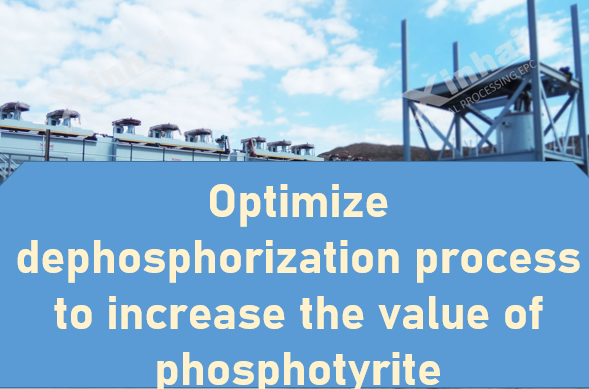Phosphorus iron ore, as a mineral resource with important industrial value, is gradually receiving attention. In order to fully utilize these resources, scholars have conducted extensive research on phosphorus removal processes, including various techniques such as beneficiation, leaching and smelting.
The mineral structure of high-phosphorus iron ore is complex, mainly composed of oolitic high-phosphorus iron ore, with iron oxides dominated by hematite, which may also include rhodochrosite, magnetite, limonite, acicular iron ore and so on. The vein minerals mainly include quartz, phosphorite, chlorite, carbonate and so on.
Beneficiation method dephosphorization dissociates iron minerals from phosphorus minerals by grinding, and then realizes dephosphorization by methods such as re-election, flotation and magnetic separation. This method is difficult to dephosphorize efficiently in conventional beneficiation, and the phosphorus content after dephosphorization is usually above 0.2%, with iron recovery between 50% and 70%. A high dephosphorization rate usually implies a strong trapping effect of the collector on phosphorus, but may lead to an increase in iron loss.
1. Re-election: Sorting by utilizing the difference in mineral density can raise iron and lower silicon, and reduce milling costs.
2. Flotation: According to the difference of valuable components, it is divided into positive flotation and reverse flotation, which realizes the separation of iron minerals and pulsates through the selective adsorption of the trapping agent.
3. Magnetic Separation: utilizes the difference of magnetic permeability of each phase in iron ore to separate iron and phosphorus, but has limited effect on high phosphorus oolitic hematite.

Wet dephosphorization utilizes acid and alkali reagents or microorganisms to selectively dissolve minerals and realize iron and phosphorus separation, including chemical leaching method and microbial leaching method.
1. Chemical leaching method: the use of sulfuric acid, nitric acid, hydrochloric acid, etc. to dissolve phosphorus-containing minerals, applicable to high phosphorus content, high phosphorus-containing minerals with high solubility of iron ore.
2. Microbial leaching method: using microbial metabolism to produce acid to dissolve phosphorus minerals, with the advantages of low cost and no environmental pollution, but the production cycle is long.
Smelting method through the steelmaking water phosphorus and alkaline slag reaction to form phosphorus-containing slag, to realize dephosphorization. Including the blast furnace iron out of the field dephosphorization, iron pretreatment dephosphorization and converter dephosphorization and other methods.
Direct reduction method uses gas or solid reductant to reduce iron oxides in the ore to metallic iron, while phosphate is not reduced, dephosphorization through magnetic separation or fusion separation and other processes. This method is in line with the iron and steel industry's pursuit of green environmental protection and high efficiency, and is suitable for processing complex iron ores.
In summary, there are various dephosphorization processes for high-phosphorus iron ore, and each method has its advantages and limitations. Choosing the appropriate dephosphorization technology requires comprehensive consideration of ore characteristics, economic benefits and environmental impact. With the progress of technology, more efficient and environmentally friendly dephosphorization methods may be developed in the future to realize the sustainable use of high-phosphorus iron ore resources.
© 2021 Yantai KZ Mining Processing Technology & Equipment Inc.